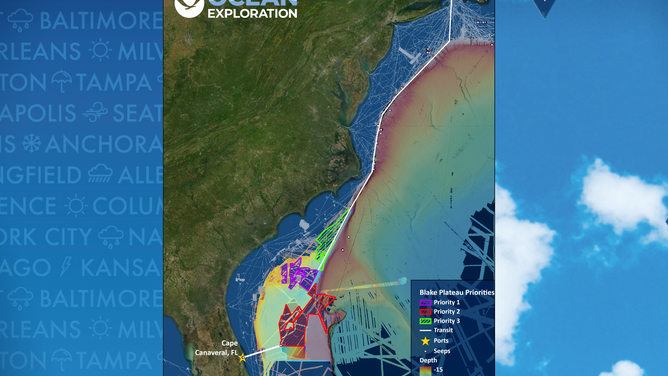Coral reefs off Southeast coast cover area larger than Vermont, scientists find
“For years we thought much of the Blake Plateau was sparsely inhabited, soft sediment, but after more than 10 years of systematic mapping and exploration, we have revealed one of the largest deep-sea coral reef habitats found to date anywhere in the world," Kasey Cantwell, operations chief for NOAA Ocean Exploration, said in a statement.
Mapping project reveals coral reefs off Southeast coast cover area larger than Vermont
The ecosystem is thought to be made up of dense thickets of the reef-building coral. (NOAA)
Scientists believe they’ve mapped a significant part of a deep-sea coral reef habitat found off the Southeast U.S. and say there is still plenty to undercover in the vast oceans.
The 6.4-million underwater seascape that runs along the coasts of Florida, Georgia, South Carolina and North Carolina makes up what is known as the Blake Plateau.
According to researchers, the water at some of the deep depths is around 39 °F, and the seafloor does not receive sunlight.
Despite the harsh conditions, cold-water corals known as the Desmophyllum pertusum survive by filter-feeding on biological particles.
Marine biologists say an important source of nutrients is the Gulf Stream, which flows at rates of up to five miles per hour through the corals.
ANTARCTICA’S ‘DOOMSDAY GLACIER’ IS MELTING AWAY DIFFERENTLY THAN SCIENTISTS FIRST THOUGHT

NOAA mapping of oceans
(FOX Weather)
"For years, we thought much of the Blake Plateau was sparsely inhabited, soft sediment, but after more than 10 years of systematic mapping and exploration, we have revealed one of the largest deep-sea coral reef habitats found to date anywhere in the world," Kasey Cantwell, operations chief for NOAA Ocean Exploration, said in a statement.
A subregion known as "Million Mounds" makes up a sizable part of the reef and could be hundreds, if not thousands, of years old.
The region is known to be a habitat for many species of invertebrates and fish, but because of its depths, the corals remain not well understood by humans.
"Past studies have highlighted some coral in the region, particularly closer to the coast and in shallower waters, but until we had a complete map of the region, we didn’t know how extensive this habitat was, nor how many of these coral mounds were connected," Cantwell stated.
Even with the conclusion of the extensive exploration, scientists estimate that only 50% of the waters around the U.S. are adequately mapped.
Even when adequately plotted, the particulars of how an ecosystem thrives can remain unknown and are only observed through the aid of submersibles during extensive research projects.
